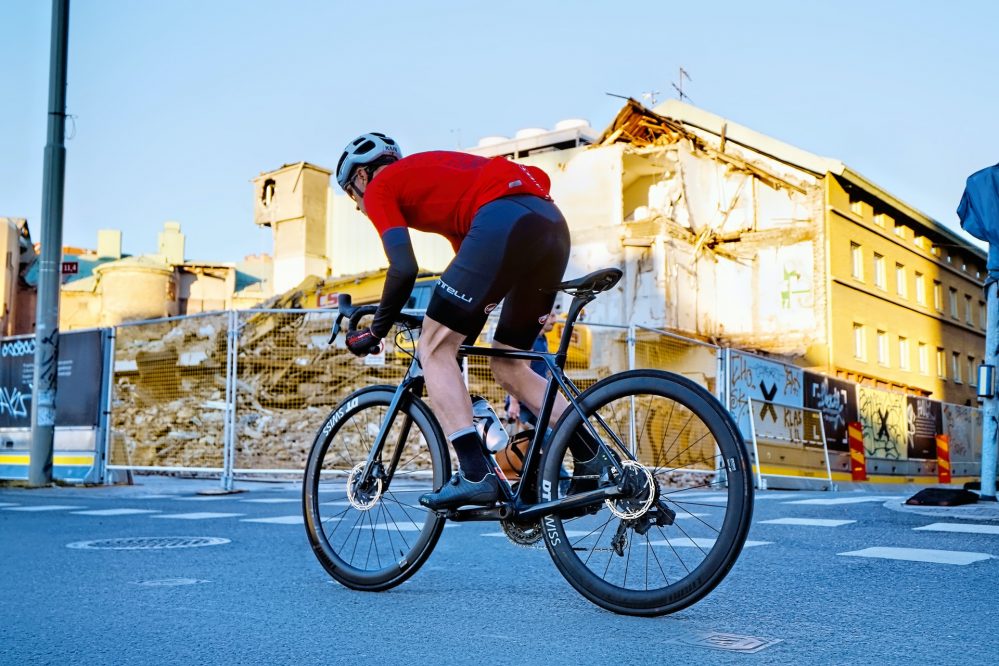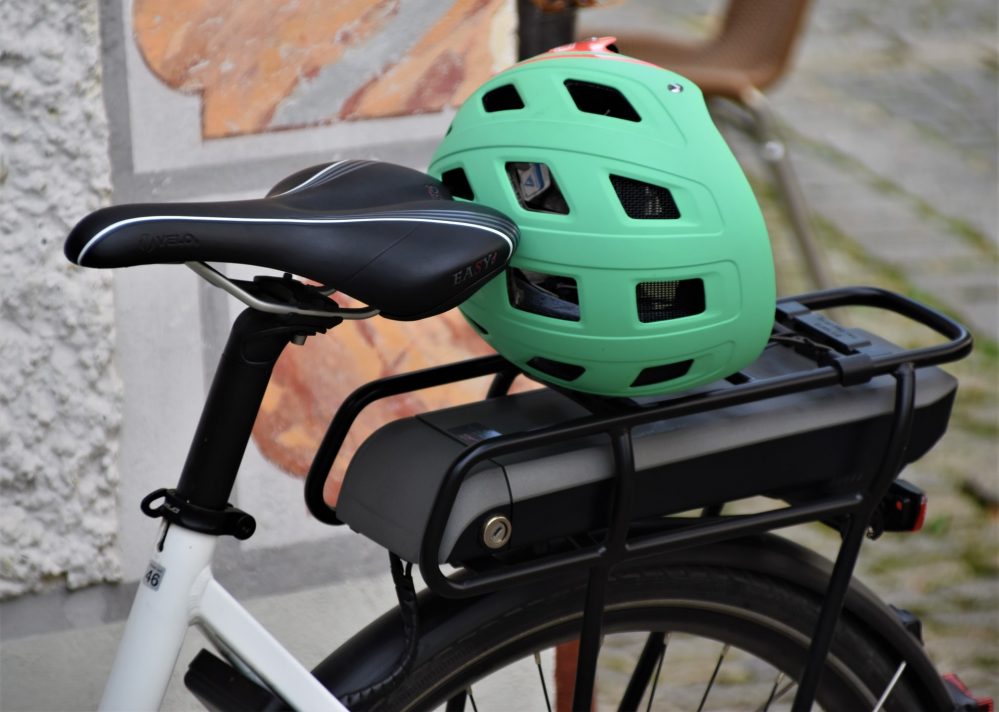Bike enthusiasts consider their bikes their most trusted friends; therefore, they pay extra attention to every detail before purchasing the next one.
Bikes, of different types and categories, are versatile vehicles that take you from place to place while being environment-friendly. This, among other factors, is the main reason that ranks bikes as the number one option in many peoples’ vehicle preferences.
However, different environments require different bike types, making it quite difficult for people to pick the right option. That is why we have compiled this guide to help you understand how to choose a bike and what to keep in mind before buying one.
How to Choose a Bike
When you walk into a bike shop, too many bike options in front of you can be overwhelming and ultimately make it difficult to pick the bike of your dreams. However, when you’re on the market for a bike, you should consider a number of factors: the type of bike you want, the roads you will travel, and other bike features. We will elaborate on some of these below.
How to Choose a Mountain Bike

If you’re in the market for a new mountain bike, you’ll inevitably have to decide between full-suspension or hardtail mountain bikes.
A full-suspension mountain bike has both a front suspension fork and a rear shock, while a hardtail bike simply has a suspension fork. The suspension type used on a mountain bike ultimately affects its traction, control, and comfort.
So, when choosing between a full-suspension or hardtail bike, the choice is mainly determined by your budget and preferred riding terrain, but there are other considerations as well.
Choose hardtail or full-suss
When choosing a mountain bike, there are some elements you need to consider. If you’re worried about the cost of bike maintenance in the future, or if you live in an area where muddy rides are prominent, a hardtail is a far better option. A hardtail is more versatile for riders who utilize their mountain bike as an all-purpose cycling vehicle. It’s a much better commuting bicycle and can be readily converted for touring.
In addition, a hardtail is suitable if you are in excellent physical condition and utilize your mountain bike as a dual-purpose commuter. With the correct geometry and a good suspension fork, hardtails can be a lot of fun on somewhat tricky terrains. However, a hardtail will be difficult on your body if you have any previous injuries, such as bad back, knee, or ankle problems.
If you have such physical problems, this is where a full-suspension mountain bike comes into play. On any terrain, mountain bikers carrying some injury tension will always be more comfortable on a full-suspension bike.
The full-suspension mountain bike offers a much safer ride for healthier riders who want to improve their skills and explore more challenging tracks. In addition, full-suspension bikes are less prone to buck a rider over the handlebars.
Choose suspension quality, not quantity
The primary function of suspension is to allow the wheels to follow the curves of the road while the vehicle’s body remains stationary. The suspension provides for the “flattening out” of bigger terrain irregularities through compression and expansion. While doing so, it allows the wheels to move up and down relative to the rest of the bike, thus reducing the effect of potholes and bumps.
In addition, it has a damping effect, so that following compression, it slowly expands back to its original position. In other words, the qualitative suspension provides a more comfortable ride and greater bike control, so when it comes to suspension, it is necessary to prioritize quality over quantity.
Choose the right mountain bike brakes
Choosing the right mountain bike brakes is essential for a safe ride. Brake systems are often packaged based on the riding you’ll be performing. Aside from riding style, bigger riders, for example, may choose a system with a little more stopping force, even if they intend to ride XC trails predominantly. Look for names like Trail, DH, FR, and AM to discover brakes with more stopping power. You can also use rotor sizes to indicate stopping power because larger rotors equal more stopping power.
How to Choose a Road Bike

A road bike is a very versatile vehicle used by many. It is ideal for different types of roads and can be used by different individuals. However, before purchasing one, you should keep some things in mind. Diverse roads, riding techniques, and body types all have a say in the kind of road bike you choose.
Decide the type of road riding you’re going to do
When you choose a road bike, the first element to address is the type of road riding you will do. Are you buying a bike intended for competitive racing and fast group riding or for more leisurely recreational riding to raise the heart rate? Do you want to commute to work or go on vacation when the weather is nice? Or, if you’re interested in longer rides on gravel roads, a gravel bike might be a better option.
All these different types of roads will need different types of road bikes; therefore, addressing these questions will help you find the perfect road bike intended for the road riding you’re going to do.
Decide on your budget
The second element you should consider when buying your road bike is the price and how much you are willing to spend on it.
Simply put, investing more money will get you a better-performing bike that is lighter, more aerodynamic, more robust, and possibly even more comfortable. However, many bike options on the market offer lower prices for these features.
Decide on the frame material
The frame material is the next feature you should consider when buying your road bike. With a smaller budget, you’re more likely to stick with an aluminum frame or anything constructed of steel. On the other hand, a larger budget will allow you to consider carbon fiber or titanium.
What’s important to remember is that the particular type of material used is less important than how the material is used. A well-designed aluminum frame is significantly more pleasurable to ride than a poorly designed carbon frame, which is true for all material selections. In general, you should prioritize a good frame with the proper fit before considering the parts bolted to it.
How to Choose a Bike Helmet

A helmet is a key safety wear that every biker should always carry. It contributes to bikers’ security and comfort and allows them to enjoy their rides without other concerns. Therefore, choosing a bike helmet that offers safety and comfort and fits properly is essential.
Proper fit
When you choose a bike helmet, a proper fit is essential because an ill-fitting lid can decrease efficiency in a crash. Moreover, you’ll wear your bike helmet for every mile on every ride, so it should be very comfortable.
To find out the correct size bike helmet, you can measure your head diameter, as helmet sizing is based on this. All you have to do is wrap a flexible tape measure around the widest section of your head, around one inch above your brows, to get your head circumference. Alternatively, wrap a thread around your head and measure the length with a yardstick. This way, you will find the perfect fit for your helmet bike.
Protect your head
The main objective of a bike helmet is to protect against brain injuries caused by the impact force of falling from a bike, and approved tests all measure a helmet’s effectiveness at doing that. A helmet’s protective portion is made up of an outer shell and an inner liner that is bonded together. The plastic shell of a helmet offers some puncture resistance and allows the helmet to slide on impact, protecting your head and neck.
In addition, the liner of a helmet is comprised of expanded polystyrene foam, similar to high-grade styrofoam; it protects your head by slowing it down and absorbing impact forces.
Be comfortable
The proper fit and the protection a bike helmet offers are all elements that contribute to the overall comfort of the helmet. Since the bike helmet is an essential factor and will be with you on every ride, you should make sure you purchase a comfortable one.
How to Choose a Bike Size
When choosing the ideal bike, it is essential to get the size right, as it will determine your overall experience with that bike. To get the correct sizing, there are some things you can do. First and foremost, you should follow the road bike frame size guide. Next, you can measure your “ape index,” the stack height, or simply get your saddle in the right position.
Follow the road bike frame size guide
To correctly choose a bike size, you can follow the road bike frame size guide, as it will allow you to choose the right frame for your height and allow you to have a smoother ride.
Below, we have presented the guide that shows what frame size you need depending on your height:
| Height (inches) | Frame Size (cm) | |
| 4’10” – 5’3″ | 46-50 (Extra Small) | |
| 5’3″ – 5’5″ | 50 – 52 (Small) | |
| 5’5″ – 5’7″ | 52 – 54 (Small – Medium) | |
| 5’7″ – 5’9″ | 54 – 56 (Medium) | |
| 5’9″ – 5’11” | 56 – 58 (Medium – Large) | |
| 5’11” – 6’2″ | 58 – 60 (Large) | |
| 6’2″ – 6’5″ | 60 – 62 (Extra Large) |
Get your saddle in the right position
Changing your saddle height is the most essential and easiest modification you can make to get the right fit for your bike. Finding your ideal saddle height can improve your pedaling efficiency, increase your riding comfort, and, most importantly, help you avoid long-term injuries.
The heel-to-pedal method is the most common method to get your saddle in the correct position. The heel-to-pedal technique entails sitting on the bike, holding on to a chair or table, or simply leaning against a wall. To get to the six o’clock position, place your heel on the pedal and pedal rearward, and you should keep your knee straight. If your knee is still bent, you need to raise the saddle, adjusting in tiny increments each time, or if your heel loses touch with the pedal, you need to lower the saddle.
Measure your ‘Ape Index’
Another thing you can do to get a more accurate reach distance is to use the ape index. To calculate your ape index, measure your arm span in centimeters, subtract your arm span from your height, and the result is your ape index.
Your ape index will help you determine whether you require a smaller or bigger frame size. If your arm span is 5cm or less than your height, you’ll most likely need a smaller frame size. However, if your arm span is 5cm or bigger than your height, you may consider upgrading to a larger frame size.
Measure the stack height
You can measure the stack height to get a more accurate bike size. Stack height is the distance between the bottom of the lower headset cup and the top of the higher headset cup. It is the frame section where the top of the fork goes.
The type of bike mainly determines the stack height of a bike. For example, sportive bikes typically have a higher stack height, whereas race bikes usually have a lower stack height for a lower front end.
Bikes with a longer reach but a lower stack height are often more aggressive as they ride harder and have a more elongated and stretched-out geometry.
How Do I Know If a Bike Is Good for Me?
To determine whether a bike is good for you or not, there are some elements that it should fulfill. Suiting your needs, fitting correctly, and lasting long enough are just some factors that tell you that a bike is good for you.
It should suit your needs
Like any other vehicle, a bike should suit your needs and meet your requirements. An ideal bike should take you to your destination comfortably; it should be sturdy and should fit properly. If your bike fills these needs, you can expect your bike to be with you for a very long time.
It should fit
A bike that fits properly is a must. If your bike is either too big or too small for you, it will result in being uncomfortable or even dangerous to ride. That is why it is crucial that before deciding on a bike, you make sure it fits properly and is comfortable to ride every day.
It should last long enough
A long-lasting bike is an ideal bike. When buying a bike, people invest in a vehicle that will be with them for a very long time. In addition, taking into consideration the fact that most of these bikes cost relatively much, buyers expect them to be durable and long-lasting. In normal conditions and everyday riding, a typical bike is expected to last approximately five years; therefore, before buying a bike, make sure it is sturdy and durable.
Final Thoughts
Ultimately, bike owners or people buying bikes for the first time are presented with limitless bike options of different types and categories. However, when choosing a bike, it comes down to the roads it will go through, bike materials, prices, and the buyer’s preferences.




